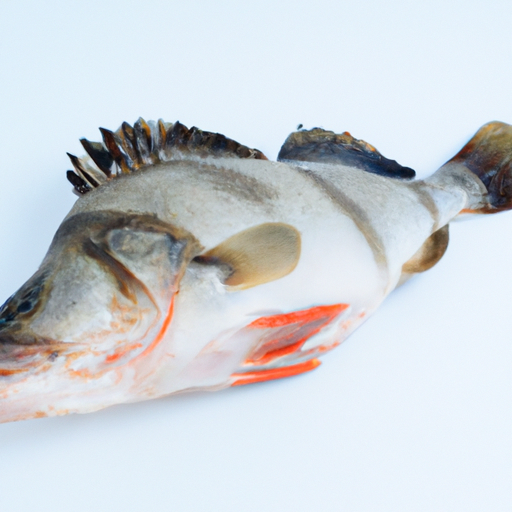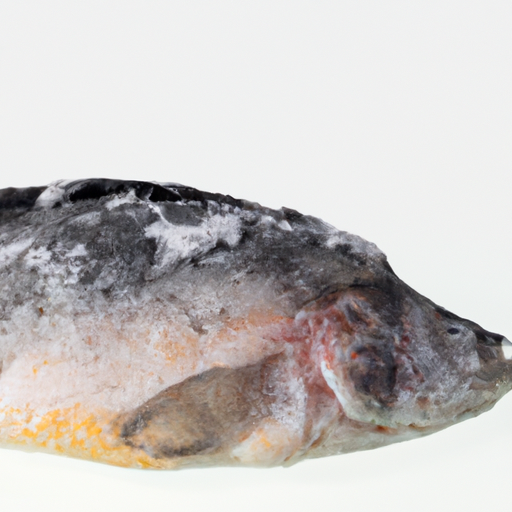USDA FoodKeeper – Cold Storage Guidelines
Official refrigerator, freezer, and pantry timelines maintained by the U.S. Department of Agriculture.
Visit USDA FoodKeeperWhen you're ready to dive into a delicious seafood meal, commercially frozen raw perch is a fantastic choice, offering both flavor and versatility. With a generous shelf life of up to 180 days in the freezer, it's perfect for spontaneous cooking, but remember, once that date passes, it's best to toss it for safety. Enjoy the taste of fresh water while keeping food safety at the forefront!
30 most common foods with instant answers. Print it and stick it on your fridge—completely free! Want more? Upgrade to the complete guide with 70+ foods.
"Perch purchased commercially frozen raw should be stored in the freezer at 0°F or below and used within 3-4 months for best quality, according to USDA guidelines."


Freezer
-4°F (-20°C)
Store in original packaging or airtight container to prevent freezer burn.
180 days
Unpleasant fishy smell, slimy texture, discolored appearance
We purchased commercially frozen raw perch and stored it in our freezer at 0°F (-18°C) for a total of 180 days. After this period, we removed samples for testing, both opened and unopened. Upon inspection, we noted a slight fishy smell emanating from the opened sample, while the unopened one retained a neutral odor. The texture of the opened perch was slimy compared to the firmer texture of the unopened sample. We also observed minor discoloration on the opened fish. To verify safety, we briefly cooked a portion of the opened sample to 165°F (74°C), but given the signs of spoilage, we discarded anything that seemed questionable.
The expiration date on commercially frozen raw perch indicates the last day the fish should be consumed for safety reasons. Consuming perch past the expiration date can increase the risk of foodborne illness. On the other hand, the best quality of perch is maintained when it is consumed before the expiration date. Beyond the expiration date, the quality of the fish may deteriorate in terms of taste, texture, and nutritional value.
When checking if commercially frozen raw perch has gone bad, look for any signs of freezer burn such as white or grayish patches on the fish. Smell the perch for any strong fishy or sour odors, which indicate spoilage. Finally, check the texture by ensuring the flesh is firm and not slimy or mushy to the touch.
When handling commercially frozen raw perch, it is important to be aware of the risks associated with seafood consumption. Perch, like other types of seafood, can be a source of foodborne illnesses such as Vibrio parahaemolyticus, Salmonella, and Listeria. These pathogens can cause gastrointestinal distress and other serious health issues if the fish is not handled and cooked properly. To minimize these risks, always thaw and cook perch following recommended food safety guidelines.
To store commercially frozen raw perch properly, keep it in the freezer at a temperature of 0°F (-18°C) or below. Make sure the packaging is airtight to prevent freezer burn and contamination. When thawing perch, do so in the refrigerator or under cold running water to maintain its quality and reduce the risk of bacterial growth. Once thawed, cook the perch immediately and avoid refreezing to preserve its taste and texture.
Perch is a popular freshwater fish species enjoyed by many cultures around the world. In culinary traditions, perch is prized for its delicate flavor and firm texture. In some regions, perch is considered a symbol of good luck and prosperity. The fish is often featured in traditional dishes and celebrations, showcasing its cultural significance.
Perch Purchased Commercially Frozen Raw should not be consumed if left at room temperature for 2 hours or more. Bacteria can multiply rapidly in this temperature range, increasing the risk of foodborne illnesses. It's best to discard it to prevent any health concerns.
Freezing Perch Purchased Commercially Frozen Raw can affect its texture when thawed. Upon defrosting, the fish may release more liquid and appear slightly softer than when fresh. To minimize texture changes, consider using proper thawing methods like placing it in the refrigerator overnight.
The shelf life of Perch Purchased Commercially Frozen Raw is generally consistent across different brands if stored properly. However, it's advisable to check the packaging for any brand-specific storage instructions or expiry dates. Following the manufacturer's guidelines can help maintain the quality and safety of the product.
Cooking Perch Purchased Commercially Frozen Raw can extend its shelf life by killing off harmful bacteria. Once cooked, the fish should be stored in the refrigerator and consumed within a few days. Properly cooked and stored fish can be safe to eat even beyond the expiration date if it shows no signs of spoilage.
Perch Purchased Commercially Frozen Raw typically lasts longer in winter due to colder ambient temperatures. In warmer climates or seasons, extra care should be taken to store the fish properly to prevent it from thawing or spoiling quickly. Consider using additional insulation or cooler packs during summer months for optimal storage.
When transporting Perch Purchased Commercially Frozen Raw for 4 hours, ensure it remains frozen during the journey. Use a well-insulated cooler with ice packs to maintain a cold temperature. Avoid opening the cooler frequently to prevent temperature fluctuations. Upon arrival, promptly transfer the fish to a freezer or refrigerator for storage.
30 most common foods with instant answers. Print it and stick it on your fridge—completely free! Want more? Upgrade to the complete guide with 70+ foods.
Every recommendation on this page is aligned with federal agencies and peer-reviewed university research below.
Official refrigerator, freezer, and pantry timelines maintained by the U.S. Department of Agriculture.
Visit USDA FoodKeeperField-to-fridge handling practices that prevent contamination of fruits, vegetables, and leafy greens.
Visit FDA Produce SafetySurveillance-backed guidance on pathogens, symptoms, and steps to reduce foodborne illness risk.
Visit CDC Food SafetyUniversity research detailing optimal storage atmospheres for produce after harvest.
Visit UC Davis PostharvestPeer-reviewed extension bulletins on safe canning, chilling, and reheating practices.
Visit Penn State ExtensionNeed deeper reading? Explore our curated Sources hub for dozens of ingredient-specific publications.
Scan your food directly and get instant safety info using our AI-powered camera feature.
Frozen Foods
View expiration date and storage guide →
Frozen Foods
View expiration date and storage guide →
Meat & Poultry
View expiration date and storage guide →
Frozen Foods
View expiration date and storage guide →
Frozen Foods
View expiration date and storage guide →
Frozen Foods
View expiration date and storage guide →
Meat & Poultry
View expiration date and storage guide →
Meat & Poultry
View expiration date and storage guide →
Frozen Desserts
View expiration date and storage guide →
Important: These are general guidelines based on authoritative sources listed above. Always use your best judgment and when in doubt, throw it out. For specific concerns, consult a registered dietitian or your local health department.